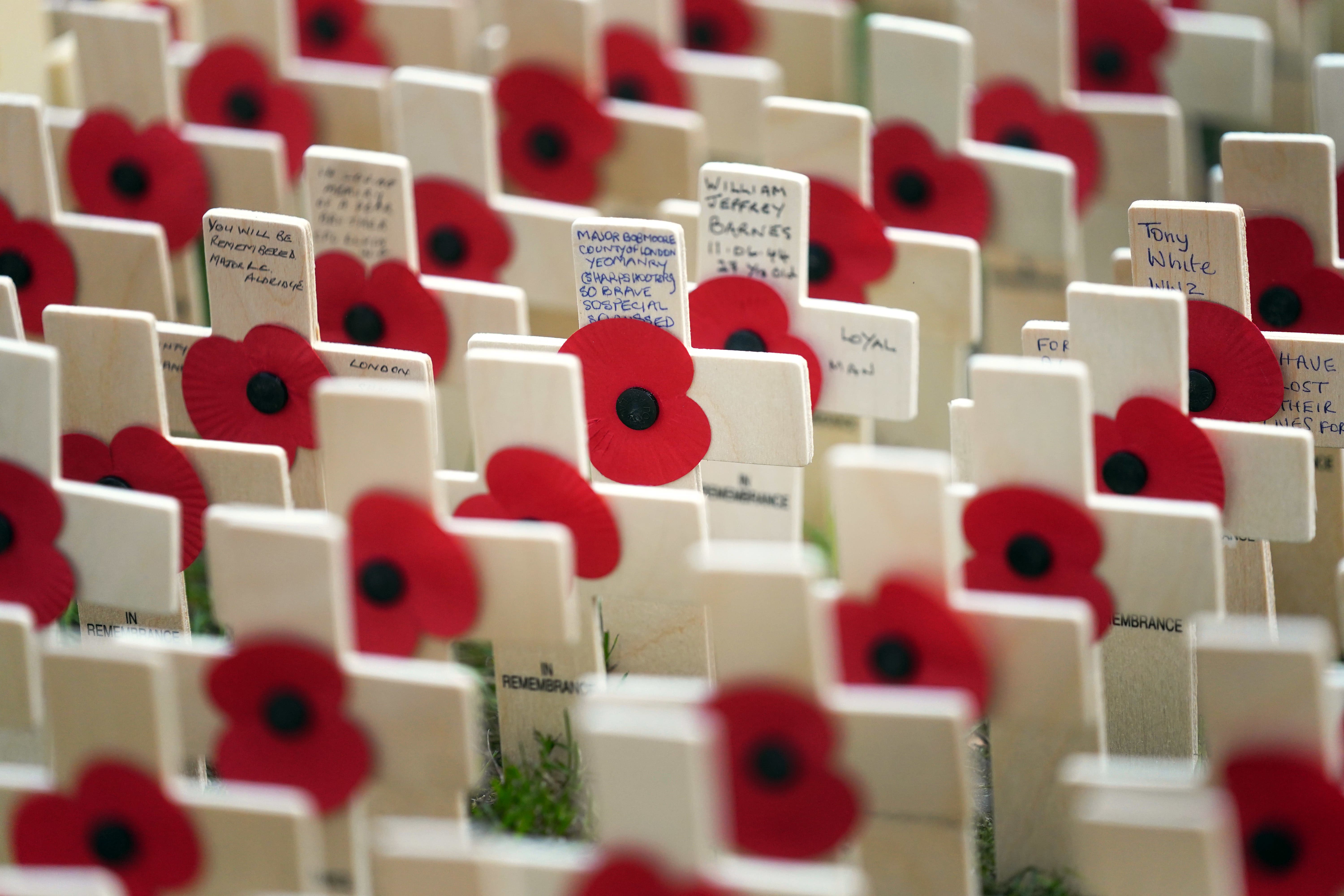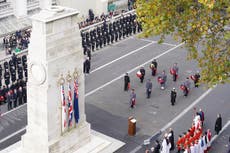Armistice Day: What is the history behind the Remembrance commemoration?
Services held every 11 November to mourn British soldiers killed in First World War and all subsequent conflicts

Armistice Day is observed in Britain every 11 November to mark the agreement signed between the Allies and Germany that brought an end to the First World War and to remember the soldiers who gave their lives during that savage conflict, as well as those killed in subsequent wars defending democratic freedoms.
The armistice – an agreement to down weapons as a prelude to the peace negotiations that would finally be completed with the signing of the Treaty of Versailles the following June – was signed in the railway carriage of French Marshal Ferdinand Foch, supreme commander of the Allied forces, deep in the forests of Compiegne in Picardy, France.
The signing took place at approximately 5.45am on a chill Monday morning, a quiet, informal ceremony at odds with the thunderous din of the war itself playing out across the Western Front.
The agreement came into effect “on the eleventh hour of the eleventh day of the eleventh month” of 1918. But more than 2,000 men died in the intervening five hours between its signing and that deadline. George Edwin Ellison of Leeds is said to have been the last British combatant to die, falling just outside Mons.
Since then, 11 November has been kept for the memory of Britain’s war dead every year, the date often referred to subsequently as Remembrance Day in the Commonwealth and as Veterans Day in the United States.
The first Armistice Day celebration was King George V’s “Banquet in Honour of the President of the French Republic” at Buckingham Palace on 10 November 1919. A two-minute silence was held in the palace grounds at 11am the following morning, so that, as His Majesty put it: “The thoughts of everyone may be concentrated on reverent remembrance of the glorious dead”.
The custom has been observed nationwide for more than a century subsequently to provide a pause for reflection on the supreme patriotic sacrifice of the brave young men who never came back.
The idea for the silence itself has been credited to Harry Hands, the mayor of Cape Town in South Africa, who instigated it in May 1918 in memory of his fallen son, Captain Richard Hands, and announced its commencement with a cannon blast from Signal Hill overlooking the port city, a gesture that was reported around the world by Reuters, encouraging its wider adoption.
One Edward George Honey has also been cited as its originator in Britain. An Australian national, Honey had witnessed the scenes of wild jubilation in the streets of London on 11 November 1918 when the cessation of hostilities first became known and considered the response to be inappropriate, given that victory had been secured at the cost of the lives of an estimated 5.7m Allied soldiers.
He duly wrote to The London Evening News the following May and suggested that a more sombre memorial was called for on the Armistice’s first anniversary. He was invited to the palace in November to take part.
The silence, still expected to be observed with great reverence, stands as a rare example of the sacred in 21st century Britain, in which Christian ritual no longer takes so prominent a place in public life as it once did.
The war produced few of the triumphalist monuments erected to honour earlier British military endeavours and marked a shift in the national mood towards remembering the sacrifices of individual citizen soldiers.

Men of the age like Rudyard Kipling, whose son John had died at the Battle of Loos, were instrumental in curating the national response, playing a role in Sir Fabian Ware’s newly-formed Imperial War Graves Commission and crafting the wording used on memorial inscriptions, notably choosing the phrase “Their name liveth for evermore” from Ecclesiasticus for use on the Stones of Remembrance. His short story “The Gardener” is also regarded as one of the most moving expressions of grief to arise from the Great War.
The idea of honouring a lone “Unknown Warrior” in Westminster Abbey to represent all of those lost servicemen whose remains were unidentified – “Known unto god”, in Kipling’s phrase – is credited to the Reverend David Railton, a chaplain on the frontlines, who suggested it to the Dean of Westminster in August 1920. A funeral was duly held for one such unknown man, standing for all his comrades, in Whitehall that November as part of the same occasion at which the Cenotaph was first unveiled.
In the United States, President Woodrow Wilson hailed the first Armistice Day celebration on 11 November 1919, although it would not be formalised by Congress until 1926. France followed suit in observing the date in 1920. It was first made a public holiday in 1924.
The wearing of the poppy, initially in white silk, in memory of soldiers killed in the fighting was first proposed by the American academic Moina Belle Michael and was soon adopted by the American Legion.
The Royal British Legion, its equivalent, picked up the idea in 1921 and has sold red poppies for the public to wear in tribute ever since, its annual Poppy Appeal also serving as a means of raising donations to support the servicemen and women of today.
The flower was suggested as a symbol by the 1915 poem “In Flanders Fields” by Lieutenant-Colonel John McCrae, a Canadian doctor who had lain to rest a friend killed in Ypres that May.
Common misconceptions about the poppy are that it serves as an endorsement of war or that its colour is meant to represent bloodshed, objections first raised by well-meaning pacifists in the 1930s but neither of which reflects the original intention.
Instead, it is used as an icon of resilience and renewal, of hope and of the promise of a brighter tomorrow, even amidst our darkest days and the carnage of warfare.



Join our commenting forum
Join thought-provoking conversations, follow other Independent readers and see their replies
Comments